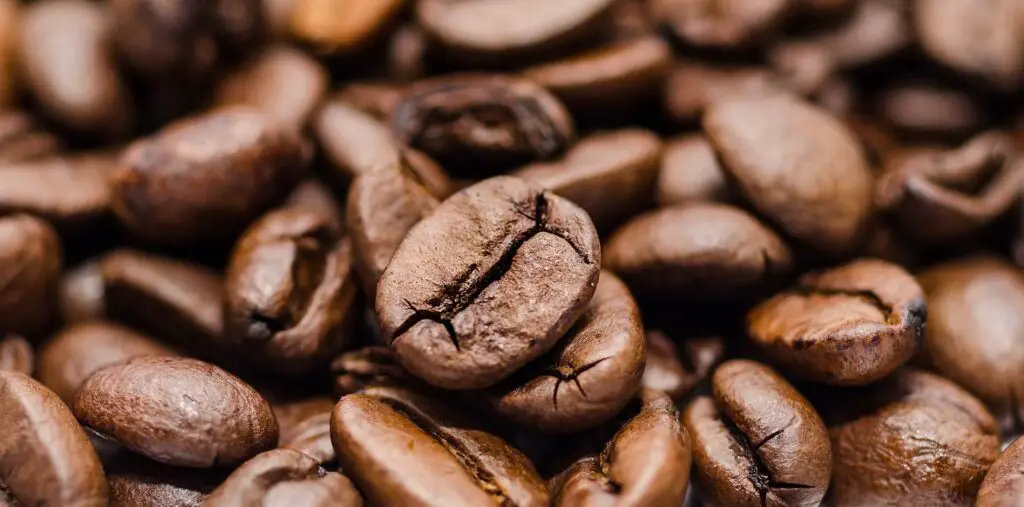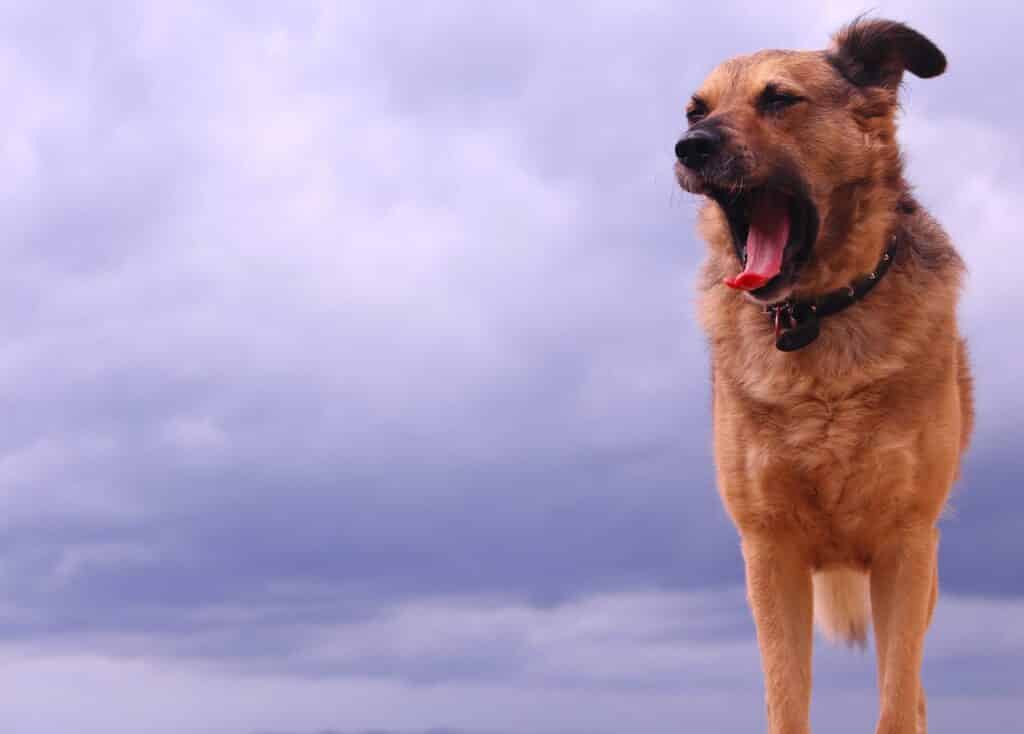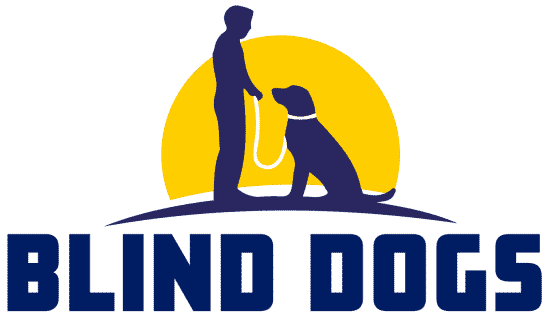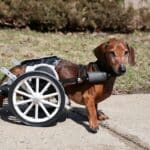There’s nothing like that cup of hot steaming coffee to kick start your day.
But have you ever wondered what would happen if your dog accidentally ate a coffee bean?
That one random moment when you are putting your beans into a grinder, and a stray bean falls to the floor.
Would you shrug it off as nothing or immediately call a vet?
If your dog ate a coffee bean, contact your veterinarian immediately and rush your dog to the hospital for quick medical intervention.
Coffee contains caffeine, a stimulant that’s quickly absorbed in your dog’s digestive tract and distributed throughout the body through blood circulation within the first thirty minutes, thus the need for fast action.
Let’s dig deeper into why coffee is harmful to dogs and what you should do if your dog ingests coffee beans.

Why are coffee beans toxic to dogs?
Coffee beans contain caffeine which affects your canine’s digestive tract, raises blood pressure, causes heart arrhythmias, and even death.
Caffeine affects your dog’s nervous system, causing lethal effects.
Even one bean can cause death in a small dog.
The effects of the coffee bean depend on the dog’s size, age, health, and how much it ingests.
An aged dog or a puppy is more likely to suffer more effects of caffeine than a healthier, more energetic dog.
Most fatalities in dogs are caused by between 100 to 200 mg per kg of caffeine ingested.

Symptoms that your dog has ingested coffee beans
Signs that your furry friend has ingested a coffee bean are visible within two hours.
Symptoms to look out for are:
- Vomiting
- Diarrhea
- Extreme thirst
- Restlessness
- Hyperactivity
- High body fever
- Increased heartbeat
- Irregular heart rate
- High blood pressure
- Collapse
- Stroke
- Seizures
- Shock
What to do if your dog eats a coffee bean
If your canine ingests a coffee bean, take him to the vet for immediate medical attention.
Don’t take your time to call friends for quick fixes or look online for home remedies.
Don’t attempt to make your dog vomit or try any other intervention on your dog without the guidance of your vet.
Some home remedies may end up causing more harm to the dog.
For instance, the dog might breathe in the vomit, causing damage to the lungs.
Inducing vomit exacerbates an already bad situation.
At the vet’s clinic, the following will happen:
Diagnosis
Your vet will ask questions that will guide him in treating your dog.
Have information like when the coffee bean was ingested, how much was eaten, and any other information required.
Note down each detail to ensure you give your vet the correct information.
To further guide in treatment, the vet may conduct tests on your dog’s blood, urine and stomach contents to determine the extent of poisoning.
Treatment
Your vet will now be able to take the best course of treatment based on the findings.
The treatment methods are:
Inducing vomit
A vet may choose to induce vomit if the dog isn’t showing reactive signs from the coffee bean.
Relieving the dog of its stomach contents will reduce the chances of the caffeine getting to the bloodstream and causing more damage.
Activated charcoal
Once the vet has induced vomiting in your dog, he will likely administer activated charcoal to absorb any remaining caffeine in the stomach before it gets to the bloodstream.
Whole bowel irrigation
Depending on the number of coffee beans your fur buddy eats, your vet may decide to use the whole bowel irrigation method.
Your vet administers a cleansing solution orally or through the nose using a tube and flushes out the stomach contents until the rectal discharge resembles the cleansing solution.
The irrigation or flushing of the stomach contents reduces the absorption of the caffeine and reduces its effects on your furry friend.
Controlling the central nervous system
Once the caffeine gets to the bloodstream, your pet may start exhibiting signs like seizures and tremors.
Your vet will give the appropriate medication to stabilize your canine.
Once stable, your furry friend can then receive treatment and be on its way to recovery.
Recovery
Your vet will determine whether to admit your dog for further observation or release for home recovery.
Recovery depends on the amount of caffeine in the dog’s system and the time to seek treatment.
Your vet will guide you on aftercare and side effects to look out for and further give you a follow-up appointment to monitor your canine’s progress.
Other foods that contain caffeine
Other than coffee bean, other foods that contain caffeine are chocolate and sodas, all of which are also harmful to dogs.
Chocolate contains theobromine, a chemical that’s dangerous to dogs.
Here are some more foods that contain caffeine:
- Tea
- Energy drinks
- Protein bars
- Diet pills
- Chocolate flavored ice cream
- Chocolate flavored yogurt
- Medication
How to stop your dog from eating a coffee bean
After seeing how badly a dog can suffer from ingesting a coffee bean, you have to take all measures to keep your furry friend safe and away from any.
- Ensure all coffee beans and other caffeine-related products are well-sealed and kept away from your furry friend’s reach.
- Always check the ingredients in products bought from the stores to ensure they do not contain caffeine.
- When making homemade treats, steer away from ingredients that contain caffeine.
- Make sure your canine can’t access the kitchen if you are not around.
- Clean up any spills so your dog can’t find stray beans or coffee spills on the floor.
- Talk to your family, friends, and visitors to ascertain that they don’t feed coffee products to your dog.
- Always have a credible veterinarian’s number on speed dial.
Conclusion
Surprisingly, a beverage that brings a spring to your day can adversely affect your furry friend.
Nevertheless, most human food is not friendly to dogs and has catastrophic effects.
To keep your dog safe and healthy, stick to a dog-friendly, wholesome diet and keep human food far from reach.
Your dog will be healthier and happier, and your pocket will thank you for it.
- What Dog Breeds Have Pink Skin? - March 24, 2023
- What Are the Most Inspiring Dog Breeding Quotes? - March 20, 2023
- Can Pheromone Spray Help Improve Dog Breeding Results? - March 19, 2023








